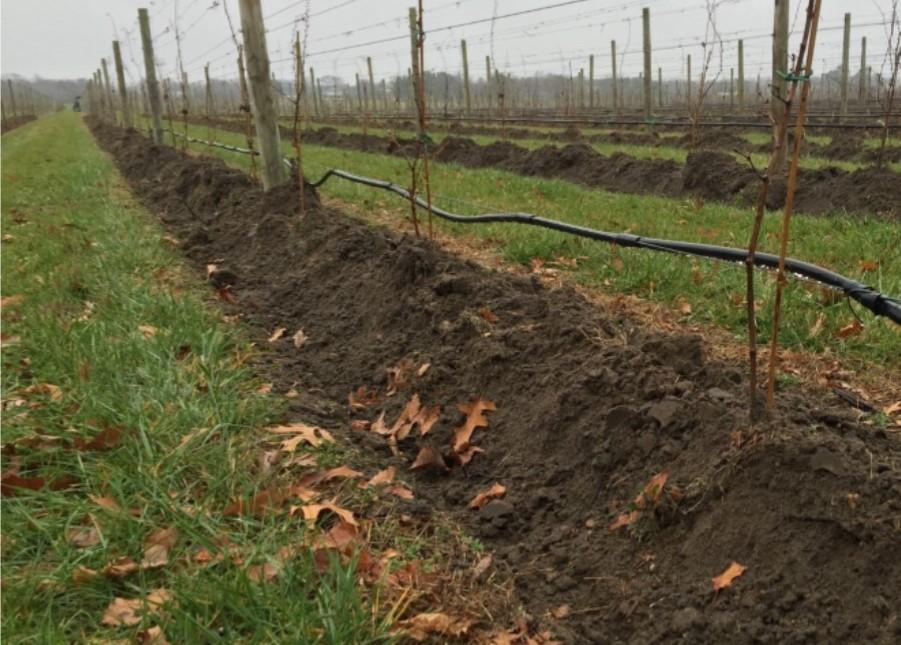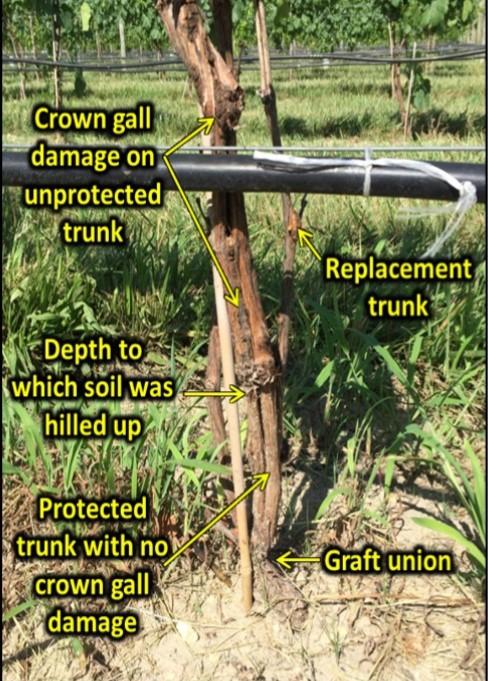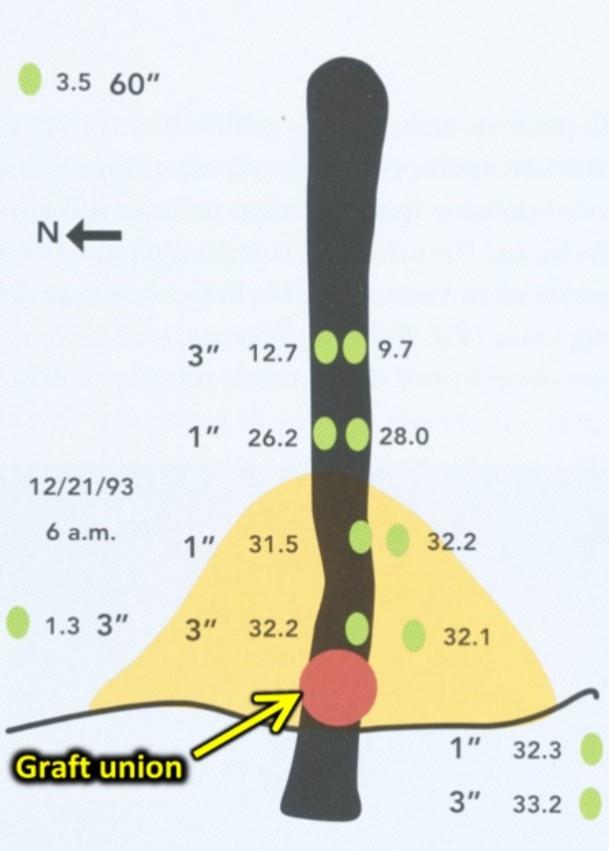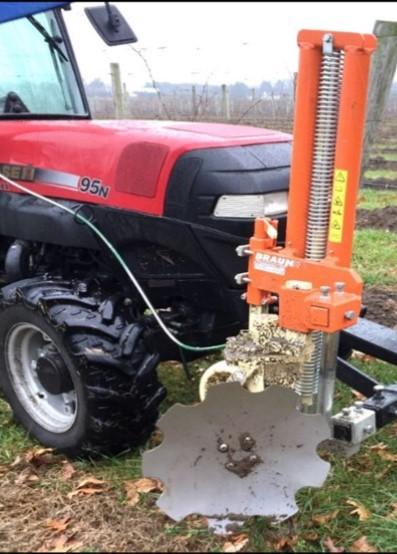Hilling-Up to Prevent Winter Injury in Vineyards
Winter injury is the single most limiting factor to grape production in the Eastern United States. Although we had experienced limited damage in the last 20 years, many vineyards in the Mid-Atlantic reported winter injuries following the harsh winters of 2013-14 and 2014-15¹. Although it has not been utilized by a significant number of growers in the past, many vineyards that have experienced damage recently should consider “hilling up” (mounding soil over graft unions) for protection again winter damage.





